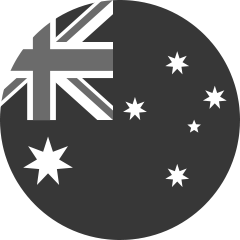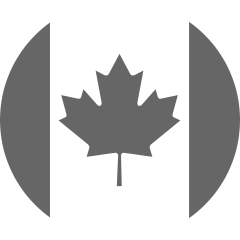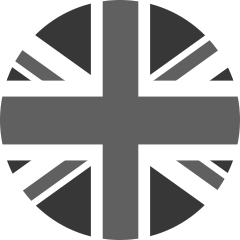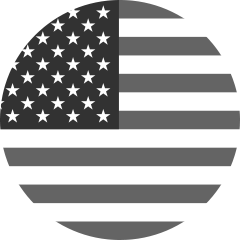5 Tips for Off-Season Triathlon Training [And Why It's a Must]
With your sights set on race day and months of preparation still left to go, off-season triathlon training probably isn’t even a thought that crosses your mind.
But as tough as it can be to think beyond your immediate goals, planning ahead for what happens once the current season ends is as vital as the work you put in during the lead-up to your race.
In this article, you’ll learn everything you need to know about why and how you should develop an off-season training plan for triathlon.
Off-Season Triathlon Training: Your Secret Sauce for Next Year
When it comes to your off-season triathlon training preparation, any experienced racer will tell you the same thing: what you do during this period will set the stage for your next race season.
The off-season is an opportunity to go through a base-building phase and to set yourself up for a strong entrance into the upcoming race season. It’s your chance to reset, rebuild your foundation, and come back stronger than ever before.
But in order to be effective, your off-season triathlon training requires a different approach than you’d take to your training during race season.
Here’s what you need to know.
Don’t Overlook Your “De-Training” Period
Once your “A-race”—the big one you’ve spent all those months training for—is finished, “de-training” is an important part of your post-race recovery process.
Dedicating time to doing absolutely nothing is essential to prevent burnout, avoid injury, and recover before getting into your preparation for next season.
Set aside a few weeks for recovery comprising ultra-low intensity workouts mixed with full-on downtime and rest days to bring your body and mind away from your last race season and to begin preparing for your next training cycle.
Enjoy swimming, cycling, and running to keep up your technique, but ultimately aim to keep everything at an all-time low for the next little while.
The amount of time you take to de-train will vary from person to person, but there are a few general guidelines you can consider:
- Sprint Triathlon: If you’ve been training for a sprint triathlon, two weeks should be enough time to recover your mind and body.
- Olympic Triathlon: If you were preparing for an Olympic triathlon, three to four weeks is a good de-train period.
Take full advantage of this time and be sure to enjoy it—this period is all about mental and physical recuperation.
After a few weeks of complete bliss, you should be ready to start easing into a great off-season training routine.

5 Tips for Off-Season Triathlon Training
When you’re finally ready to ramp up the intensity a bit, it’s time to get your off-season triathlon training underway.
Remember: this isn’t the same as your race season training. So, to help you get oriented into your new routine, we’ve compiled a few triathlon preparation tips you can keep in mind.
Start Planning for Next Season
With last season finally behind you, start looking ahead once again.
Consider your goals for next year. Reflect on the season you just finished up. And take some time to ask yourself some important questions:
- What were your strengths?
- What could you improve upon?
- Where are you currently in your triathlon journey?
- What do you want to achieve next season?
This is also a great time to think about:
- Your overall enjoyment of the sport and the process
- How it balanced into your life commitments
- Whether you’d rather invest more, less, or the same amount of time to your training
It’s also wise to start mapping out your race calendar, identifying your A-race, picking out a few “practice” races along the way, and devising a plan of attack to help you work towards your big goal.
Keep Swimming (A Lot)
For most triathletes, the number one priority for the off-season is to increase swimming capacity while your overall training load is still low.
While it can be tempting to put swimming on the back burner, you’re better off taking advantage of this opportunity to work on your form, technique, and overall fitness.
The best way to do this is to add extra swim training days into your off-season triathlon training place in order to build and solidify your endurance base.
As a guideline, think about doing four to five swims per week.
The off-season is also a time for fine-tuning technique, so these sessions should incorporate lots of drills and equipment work, and pay extra attention to each aspect of your stroke.
It’s also wise to work in some longer, higher-volume endurance training sessions.
Come pre-season and race season, you'll feel great about the amount of work you put into your swimming fitness while you had the time.

Work In Some Strength Training
Don’t underestimate the importance of strength training, especially when it comes to the off-season. This is an excellent focus for your more relaxed training period—one that you may not be able to give as much attention to during race season.
Strength should be built in the off-season so that you can maintain it and utilize it effectively when the volume and intensity of your swim, bike, and run workouts increases.
Focusing on strength training allows you to:
- Increase overall power and muscular endurance capacity
- Address muscle imbalances
- Proactively work to prevent injuries
Your goal should be to prioritize functional training and compound lifts between now and the start of your full-on race training.
Prioritize Areas of Opportunity
While you were reflecting on last season, you probably identified a few areas where you could benefit from some additional focus and improvement.
Your off-season triathlon training is the time to give these some extra attention.
Try to pinpoint your weaknesses and channel more time towards specificity.
As a rule of thumb, aim to keep your running and riding sessions light in intensity while bringing your volume and distance up.

Follow a Training Plan
The same way it’s vital to follow a training plan during your race season, your best bet is to follow an off-season triathlon training plan as well.
Without a plan, you run the risk of either not taking enough rest or resting for too long and not making the most of this critical time. This can result in entering race season feeling unprepared or lacking confidence—making it incredibly difficult to compete at your best.
Plan your off-season training just like you’d plan your race season: dedicate time, incorporate structure, and pinpoint your areas of focus.
This will make your training easier to stick to and more enjoyable because you’ll know you’re proactively working toward your goals.
If you’re not sure where to start, take the guesswork out of your off-season swim training. FORM's Off-Season Maintenance Training Plan is dedicated to helping you structure your off-season swim training while a hyper-focus on endurance building and technical training.
Looking for more advice? Check out these Off-Season Swim Training Tips from Professional Triathlete Hayden Wilde.
Improve Your Off-Season Triathlon Training with FORM
Off-season triathlon training can be tricky to navigate. It’s a fine balance between staying active, resting your body and mind, and training with intention and purpose. But with the right guidance, the process becomes much simpler and more effective—and that’s where FORM comes in.
With FORM, you'll swim with real-time metrics right there in your goggles. Plus, get a free 1-year membership and boost improvement in the pool with 1,000+ workouts, 30+ training plans, and a custom workout builder.
Backed by a 2-year warranty and 30-day return guarantee, FORM goggles are built to last.
Already have FORM goggles, but don’t have access to our full range of features? Head to the FORM app to start a 30-day free membership trial*.
*30-day free membership trial is only valid for one-time use for new members who have previously purchased FORM goggles.










